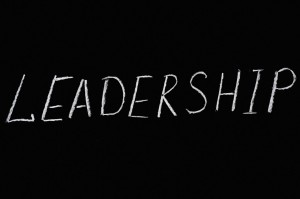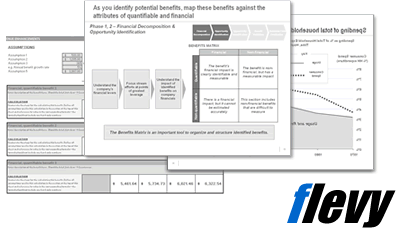
 Become a PowerPoint Guru by Dave Tracy
Become a PowerPoint Guru by Dave Tracy
Learn the methodologies, frameworks, and tricks used by Management Consultants to create executive presentations in the business world.

 Become a PowerPoint Guru by Dave Tracy
Become a PowerPoint Guru by Dave Tracy
 Organizational leadership can draw on 3 Strategic Thinking Games to master Business Strategy and apply in varied scenarios and organizational structures. The Strategic Thinking Games provide Decision Making models for senior executives to choose from and use as per the situation.
Organizational leadership can draw on 3 Strategic Thinking Games to master Business Strategy and apply in varied scenarios and organizational structures. The Strategic Thinking Games provide Decision Making models for senior executives to choose from and use as per the situation.
The Strategic Thinking Games are based on mathematics and statistics, particularly Probability Theory, and exhaustive research into the Business Strategy realm. Probability Theory is actually a branch of mathematics that deals with analysis of random phenomena. The basic element of Probability Theory is an experiment that can be at least hypothetically repeated under identical conditions, but may lead to different outcomes on different trials.
Each of the Strategic Thinking Games warrants employing a different mindset and decision-making approach to confront the challenges presented by a particular problem. Executives can apply these Strategic Thinking Models to control their future:
Let’s discuss these Strategic Thinking Models in detail.
The 1st Strategy game allows the players to make 40 blind draws from a pot holding 25 black and 75 red balls. It costs $10 per draw—which has to be paid beforehand—and it allows the players the opportunity to win $20 on drawing a red ball but naught on drawing a black ball. The game imitates a scenario where managers make informed bets about the future based on data and insights into the level of uncertainty encountered.
The Planning as Positioning Model enables the executives to learn about their industry and competition, gauge ambiguities and uncertainties, and select markets that have the potential to generate a positive Return on Investment (ROI).
A classic example of a company operating on the Planning & Positioning Model was the International Telephone and Telegraph Corporation (ITT). For 17 years, the company was led by Harold Geneen (from 1960 to 1977). Harold Geneen was unrestricted by any company mission. He expanded in multiple industries, acquired around 350 enterprises from varied industries, including auto parts, cosmetics, hospitality, insurance, and technology. As a formal accountant, Harold considered facts as indisputable, final, and a foundation for making strategic decisions. He would travel to far-flung regions to meet his business unit managers, who were free to make their own strategic decisions but were responsible for their unit’s performance and objectives’ achievement.
The 2nd Strategy game allows the players to blind draw from a pot containing an unknown mix of red and black balls. This time it costs $5 per draw. Players have to bet on either color before each draw. They can draw up to 50 times, or stop whenever they want, and win $20 if they draw the right ball. This game imitates a scenario for training managers to dynamically respond to upcoming events with unpredictable degree of uncertainty.
Through the pot filled with balls experiment, it was revealed that when people are given complicated choices, they behave in manners conflicting with their beliefs. In his famous Ellsberg Paradox, Ellsberg hypothesized that people make illogical preferences in order to avoid ambiguity. The Organizational Learning Model underlines that in a world full of uncertainties instead of spending too much time predicting the future, planning and positioning, organizations should devise and implement an evolving strategy, take one step at a time, search for viable patterns, and then adjust the course based on results.
An example of successful implementation of the 2nd Strategic Thinking Model is Corning Inc. that embraced Organizational Learning to develop a healthy product pipeline. The company developed Pyrex, TV tubes…..
Interested in learning more about the 3 Strategic Thinking Games? You can download an editable PowerPoint on Strategic Thinking Games here on the Flevy documents marketplace.
You can download in-depth presentations on this and hundreds of similar business frameworks from the FlevyPro Library. FlevyPro is trusted and utilized by 1000s of management consultants and corporate executives. Here’s what some have to say:
“My FlevyPro subscription provides me with the most popular frameworks and decks in demand in today’s market. They not only augment my existing consulting and coaching offerings and delivery, but also keep me abreast of the latest trends, inspire new products and service offerings for my practice, and educate me in a fraction of the time and money of other solutions. I strongly recommend FlevyPro to any consultant serious about success.”
– Bill Branson, Founder at Strategic Business Architects
“As a niche strategic consulting firm, Flevy and FlevyPro frameworks and documents are an on-going reference to help us structure our findings and recommendations to our clients as well as improve their clarity, strength, and visual power. For us, it is an invaluable resource to increase our impact and value.”
– David Coloma, Consulting Area Manager at Cynertia Consulting
“FlevyPro has been a brilliant resource for me, as an independent growth consultant, to access a vast knowledge bank of presentations to support my work with clients. In terms of RoI, the value I received from the very first presentation I downloaded paid for my subscription many times over! The quality of the decks available allows me to punch way above my weight – it’s like having the resources of a Big 4 consultancy at your fingertips at a microscopic fraction of the overhead.”
– Roderick Cameron, Founding Partner at SGFE Ltd
 Evaluation and onboarding of outstanding leaders is anything but straightforward. Almost all organizations have set up testing mechanisms or assessment centers to distinguish senior leadership candidates having traits that make up for Exceptional Leaders. These assessment centers shortlist leaders based on certain indicators and criteria.
Evaluation and onboarding of outstanding leaders is anything but straightforward. Almost all organizations have set up testing mechanisms or assessment centers to distinguish senior leadership candidates having traits that make up for Exceptional Leaders. These assessment centers shortlist leaders based on certain indicators and criteria.
However, these assessments are not always accurate in predicting the best leaders. At times, the entire evaluation exercise results in drafting mediocre leaders and fails to select top influencers and role models for the organization. The traditional methods of gauging senior leaders prove inadequate based, typically, on 3 common flaws:
Research by PwC—spanning over a period of 10 years with a sample size of 2500 senior executives, who remained a part of C-suite successions in large organizations—reveals that the common flaws in leadership assessment methods can be confronted methodically. To find the best C-level executives, leadership evaluations should focus on identifying candidates possessing the following 4 key traits that are typical only of the top C-level executives:
Let’s dive deeper into these traits.
In today’s world of disruption, organizations face new challenges on a day-to-day basis. Exceptional leaders have the ability to process tremendous volumes of information and simplify things fairly easily. Leaders who truly standout are well-versed in tackling confusion and learn promptly. They are great at:
People in an organization often operate in groups. These groups consider people outside their circle as competitors or “outsiders.” This tribal mentality is detrimental for an organization and inculcates individual thinking—focusing only on personal / group targets—and debilitates the ability to operate outside one’s comfort zone. Exceptional leaders have the skills to:
Nobody can undermine or deny the importance of teamwork. Much has been written on the subject. However, in reality, most teams do not quite understand the spirit and commitment fundamental to develop teamwork.
Exceptional leaders:
Interested in learning more about the traits of outstanding leaders? You can download an editable PowerPoint on Exceptional Leadership here on the Flevy documents marketplace.
You can download in-depth presentations on this and hundreds of similar business frameworks from the FlevyPro Library. FlevyPro is trusted and utilized by 1000s of management consultants and corporate executives. Here’s what some have to say:
“My FlevyPro subscription provides me with the most popular frameworks and decks in demand in today’s market. They not only augment my existing consulting and coaching offerings and delivery, but also keep me abreast of the latest trends, inspire new products and service offerings for my practice, and educate me in a fraction of the time and money of other solutions. I strongly recommend FlevyPro to any consultant serious about success.”
– Bill Branson, Founder at Strategic Business Architects
“As a niche strategic consulting firm, Flevy and FlevyPro frameworks and documents are an on-going reference to help us structure our findings and recommendations to our clients as well as improve their clarity, strength, and visual power. For us, it is an invaluable resource to increase our impact and value.”
– David Coloma, Consulting Area Manager at Cynertia Consulting
“FlevyPro has been a brilliant resource for me, as an independent growth consultant, to access a vast knowledge bank of presentations to support my work with clients. In terms of RoI, the value I received from the very first presentation I downloaded paid for my subscription many times over! The quality of the decks available allows me to punch way above my weight – it’s like having the resources of a Big 4 consultancy at your fingertips at a microscopic fraction of the overhead.”
– Roderick Cameron, Founding Partner at SGFE Ltd
 Strategy and execution are the 2 critical elements that drive a business. However, leaders often struggle even with defining—let alone devising and executing—an effective strategy. Many of those who are responsible to deal with it fall short of describing how they typically employ it. This failure takes its roots from the fact that there is no clear path associated with strategy.
Strategy and execution are the 2 critical elements that drive a business. However, leaders often struggle even with defining—let alone devising and executing—an effective strategy. Many of those who are responsible to deal with it fall short of describing how they typically employ it. This failure takes its roots from the fact that there is no clear path associated with strategy.
Strategy is about making sound decisions about unforeseen problems. It’s about selecting the right options—about matters that are often quite ambiguous today but have great significance in the future—based on thorough contemplation, detailed analysis, and creative ideas. Broadly speaking, strategy encompasses these 3 main elements:
Great strategists execute their plans, analyze the results, evaluate their actions, and perform course correction based on the outcomes. They are not afraid of even revamping their approach entirely. Senior leaders should clarify their understanding of the concept of strategy and draw attention to the importance of differentiating between the 3 distinct types of strategies before formulating their own course of action:
Let’s delve deeper into the 3 types of strategy.
General Strategy indicates how a specific objective will be achieved, with well-thought-out plans. The focus of this type of Strategy is on ends (objectives and results) and means (the resources we have to achieve the objectives). Strategy and tactics combined bridge the gap between ends and means; where Strategy deals with deploying the resources at our disposal while tactics govern their utilization. A pattern of decisions and actions marks progress from the starting point to achievement of objectives in General Strategy.
Senior executives need to deliberate on the following questions before devising their General Strategy:
Corporate Strategy describes what a company does, the purpose of its existence, and what it aims to become. Corporate Strategy focuses on choices and commitments concerning the markets, business, and the organization. Corporate Strategy classifies the markets and the businesses in which a company will operate. This type of strategy is typically decided in the context of defining the company’s mission and vision.
A detailed assessment of the existing strategy, market, competition and environment is critical for devising the Corporate Strategy. Strategists indicate that there are critical elements that should be factored in while formulating Corporate Strategy. These elements include product or service offerings, resources, marketing and sales approaches, manufacturing capabilities / capacity, customers, distribution channels, technology, type of market and its requirements, and revenue and profit goals.
While formulating Corporate Strategy, senior executives should consider and seek answers to the following questions:
Competitive or Business Strategy specifies for an enterprise the core reason on which it contests its rivals. It depends on an organization’s competences, advantages, and disadvantages compared to the market and the rivals.
Interested in learning more about the General, Corporate, and Competitive Strategies? You can download an editable PowerPoint on The 3 Distinctions of Strategy here on the Flevy documents marketplace.
You can download this and hundreds of other consulting frameworks and consulting training guides from the FlevyPro library.

Transformation from a product-based model to a platform model is a dream for many executives. More and more product companies are now shifting into a platform model. The drive behind such a shift is the huge success of platform companies—e.g., Amazon, Google, and Apple. These organizations started out as a retailer, search engine, and iPod manufacturer respectively, but later transformed into platform models.
However, bringing this transformative vision into reality is anything but straightforward. Research into successful platform businesses reveals that this necessitates a robust approach comprising the following 4 critical phases:
Let’s dive deeper into the first two phases of the approach, for now.
A platform model is not a remedy to resuscitate products that are on a downward slide. It necessitates an attractive product that offers a significant customer base and value to help improve customer loyalty and resist rival offerings. The critical mass of customers also allows the platform company to create value for—and attract—third parties that are crucial for the platform to flourish.
Qihoo 360 Technology, a large internet firm in China, commenced its operations in 2006 by selling an antivirus software, 360 Safe Guard. To build a broad user base and to gather customers’ feedback on improving the product, the company started giving away the product free. The company maintained a list of malware as well as a “whitelist” of programs that were safe for the users. The critical mass of customers allowed Qihoo to:
The notion that an organization has to embrace either a product-based or a platform-based business model is far from reality. Although, both the product-based and platform-based business models need a framework to assign dedicated resources and manage operations, however, Business Transformation from a product-based model to a platform-based model gets simplified utilizing a hybrid approach. A product-based business model calls for organizations to have differentiated products catering to customers’ needs, to create value. Whereas, a platform-based business model creates value by linking users to 3rd parties and charging fees for using the platform. The focus of Platform models is on:
For example, Apple converted itself from a product model to a platform model within a year after the launch of the first iPhone. Initially, Apple reacted defensively to any hacking attempts and precluded 3rd party apps on the iPhone, but then decided to create an open platform, and launched the App Store. The hybrid model and platform mindset created additional income streams and significant revenue for Apple.
To make a product and business model profitable, the conversion of product users into platform users is of utmost importance. To enable this, an organization needs to develop its platform in such a way that it should present enough additional value for the customers to adopt it and become its users. Three key elements are critical to accomplish this:
If the platform does not offer adequate value for the customers they are not going to embrace it the way they do to a great product. Similarly, addition of new offerings that are coherent with the brand has a strong correlation with new platform adoption. New offerings gain traction from a firm’s image and strengthen the brand further. Likewise, allowing 3rd parties to make upgrades, improve product offerings, and develop the platform further helps in rapid conversion, additional revenue, and growth.
Interested in learning more about the phases of the approach to Products-to-Platforms Transformation? You can download an editable PowerPoint on Products to Platforms Transformation here on the Flevy documents marketplace.
You can download this and hundreds of other consulting frameworks and consulting training guides from the FlevyPro library.
In a recent update to Flevy, the documents marketplace has allowed select contributors to offer complimentary documents. However, it takes some digging to find these free offers. Here, we present 5:
Introduction to Strategy
https://flevy.com/download/introduction-to-strategy-74
What is Strategy? This 20-slide presentation provides an introduction to strategy, separating out the concepts of Corporate Strategy vs. Business (Unit) Strategy.
Introduction to Operational Excellence
https://flevy.com/download/introduction-to-operational-excellence-38
This 48-slide presentation provides a high-level introduction to Operational Excellence. It explains the four building blocks: Strategy Deployment, Performance Management, Process Excellence, and High Performance Work Teams.
A Practical Framework Approach to Change
https://flevy.com/download/a-practical-framework-approach-to-change-65
This presentation presents a flavour of some of the more necessary change components and associated tools & techniques that will require consideration during any change initiative.
Lean Thinking 101
https://flevy.com/download/lean-thinking-101-10
This 32-page presentation that explains the Lean management philosophy, based on the Toyota Production System (TPS).
Delta Model Primer
https://flevy.com/download/delta-model-primer-77
The Delta Model is a growth strategy framework developed by MIT/Sloan professors to help managers in the articulation and implementation of effective corporate and business strategies.
Over the past couple weeks, a ton of new business frameworks, covering topics from the 5S framework to Kaizen principles to benchmarking, have been added to Flevy. Flevy is a marketplace of premium business documents, which include business frameworks, financial models, PowerPoint templates, market research reports, and other similar documents.
For a limited time, Flevy is offering a FREE download of the Strategy Development Discussion Deck. To download this document, just go here:
This is a discussion deck template for a corporate strategy development session. In this discussion, we go through a 2-prong approach to growth and evaluate the merits of various growth drivers. From the 2-prong approach, various scenarios can be generated in the discussions and dashboards are used to evaluate each scenario.
You can find more details about the product (listed at $30) here:
https://flevy.com/browse/business-document/Strategy-Development-Discussion-Deck-91
Flevy is a marketplace for business strategy frameworks, PowerPoint templates, financial models, business presentations, market research reports, and other premium business documents. Download documents to expedite your projects or upload documents to generate passive income.
Having a pre-built financial model for reference can save you countless days–if not weeks!–of work. In this article, we’ve compiled an extensive list of financial models available on Flevy, the marketplace for premium business documents.
FEATURED MODEL
(World’s First!) Research Report-cum-Financial Model
https://flevy.com/browse/business-document/Research-Report-cum-Financial-Model-121
This is a impressive and innovative financial model developed by an independent financial research firm. The first model that combines both a research report and financial model, this document contains a wealth of information about commodity futures exchanges as an industry, the regulatory environment in India, trading volumes, business model, strengths, financials and earnings estimates of MCX, and global peer financial highlights and valuations
VALUATION MODELS
Below, are 4 valuation models for various industries and firms.
Manufacturer Valuation Model
https://flevy.com/browse/business-document/Excel-Model-for-Manufacturing-Firm-120
Commercial Bank Valuation Model
https://flevy.com/browse/business-document/Excel-Model-for-Banking–119
LBO Models
https://flevy.com/browse/business-document/Sample-LBO-Model-Template-26
https://flevy.com/browse/business-document/Sample-LBO-Model-Template-2-27
(This second one also contains a blank LBO model template.)
MODELS USEFUL TO MANAGEMENT CONSULTANTS
Consulting Ratios Calculator
https://flevy.com/browse/business-document/Consulting-Ratios-Calculator-77
Consulting Fee Setting Matrix
https://flevy.com/browse/business-document/Consultant-Fee-Setting-Matrix-9
Scatterplot Labeler Template
https://flevy.com/browse/business-document/Scatter-plot-Labeler-Template-8
TIME & EXPENSE TRACKING MODELS
Staff Demand and Shift Bidding
https://flevy.com/browse/business-document/Staff-Demand-and-Shift-Bidding-19
Working Hours Diary with Lunch
https://flevy.com/browse/business-document/Working-Hours-Diary-with-Lunch-112
Vacation Schedule/Tracker
https://flevy.com/browse/business-document/Vacation-Schedule-Tracker-116
Travel Expenses Diary
https://flevy.com/browse/business-document/Travel-Expenses-Diary-111
Labor Costs Diary
https://flevy.com/browse/business-document/Labor-Costs-Diary-106
OTHER FINANCIAL MODELS
Compounded Annual Stock Return Calculator
https://flevy.com/browse/business-document/Compounded-Annual-Stock-Return-Calculator-109
Supply Chain Program Comparison Model (Working Capital)
https://flevy.com/browse/business-document/Supply-Chain-Program-Comparison-Model-34
Cash Flow Projector
https://flevy.com/browse/business-document/Cash-Flow-Projector-104
For even more financial models, you can peruse the Excel documents section of Flevy. There are about 30 Excel models and spreadsheets currently on the marketplace (with more being added each week).
Last but not least, here are 2 of our best selling LearnPPT toolkits–both with financial models included in the package.
Business Case Development Toolkit
http://learnppt.com/powerpoint/58_Business-Case-Development-Toolkit-with-Excel-model.php
Pricing Strategy Toolkit
http://learnppt.com/powerpoint/65_Pricing-Strategy-Toolkit-with-Excel-Model.php
Questions, thoughts, concerns? Go to my site (learnppt.com) and shoot me an email.
For pre-made PowerPoint diagrams used in business presentations and other powerpointing needs, browse our library here: learnppt.com/powerpoint/. These diagrams were professionally designed by management consultants. Give your presentations the look and feel of a final product made by McKinsey, BCG, Bain, Booz Allen, Deloitte, or any of the top consulting firms.
For the past 2 years, LearnPPT has been creating and selling quality business documents. These ranged from Business Frameworks to PowerPoint Templates. It has proven to be a successful business model — as there is a tangible demand for these products. We’ve had customers from small businesses to Fortune 50 companies to non-profits in over 45 countries.
Now, you, too, can sell your business documents. Check out the latest venture we’ve been collaborating on –
 Flevy is a marketplace for selling business documents. We are in pre-launch and actively inviting business professionals like yourself.
Flevy is a marketplace for selling business documents. We are in pre-launch and actively inviting business professionals like yourself.
Think about all the tools you have created to make your job easier. List them on Flevy. We will do the marketing, we will drive the sales. There’s no reason to let your IP collect dust when it can be making you perpetual income.
Registration just opened up a couple days ago!
Here is a compilation of the free PowerPoint documents we’ve made available through the course of 2011.
Holiday Gift PowerPoint Toolkit
http://learnppt.com/downloads/holiday-gift/
Here is a collection of 20+ PowerPoint diagrams, templates, and charts, originally created as a holiday gift to LearnPPT’s newsletter subscribers.
Process Optimization Presentation
http://learnppt.com/downloads/process-optimization/
This is a process optimization presentation. It is the accompanying download for this PowerPoint tutorial:
http://powerpointing-templates.com/2011/10/slide-from-scratch-process-optimization-presentation/
Business Strategy Update Presentation
http://learnppt.com/downloads/strategy-update/
This is a presentation showing a business strategy update. It is the accompanying download for this PowerPoint tutorial:
http://powerpointing-templates.com/2011/09/business-strategy-update-presentation/
Agenda and Transition Slide Template
http://learnppt.com/downloads/agenda-contents/
This is a simple, clean, table-based template used for creating the agenda slide and transition slides.
Cone Diagrams
http://learnppt.com/downloads/cone_diagrams/
This is a set of cone diagrams. Creating a cone diagram yourself is simple, as illustrated by the accompanying tutorial:
http://powerpointing-templates.com/2011/06/powerpointing-how-to-create-a-cone-diagram/
Decision Tree Template
http://learnppt.com/downloads/decision-tree-powerpoint-template/
This is a fancy looking decision tree diagram/template. It was created originally for a client slide that was scrapped. You can modify it to include additional decision points and outcomes.
Diamond Diagram
http://learnppt.com/downloads/diamonds/
This is a set of diamond diagrams of various segments. It is created using the built-in Radar charts, as illustrated in the accompanying tutorial:
http://powerpointing-templates.com/2011/02/powerpointing-how-to-create-a-diamond-diagram/
Want to add more free PowerPoints to your collection? Check out our free PowerPoint downloads of 2010 (26 in all last year):
http://powerpointing-templates.com/2010/12/free-powerpoint-downloads-of-2010/
Thanks for reading our blog!
Questions, thoughts, concerns? Go to my site (learnppt.com) and shoot me an email.
For pre-made PowerPoint diagrams used in business presentations and other powerpointing needs, browse our library here: learnppt.com/powerpoint/. These diagrams were professionally designed by management consultants. Give your presentations the look and feel of a final product made by McKinsey, BCG, Bain, Booz Allen, Deloitte, or any of the top consulting firms.
Error: Twitter did not respond. Please wait a few minutes and refresh this page.